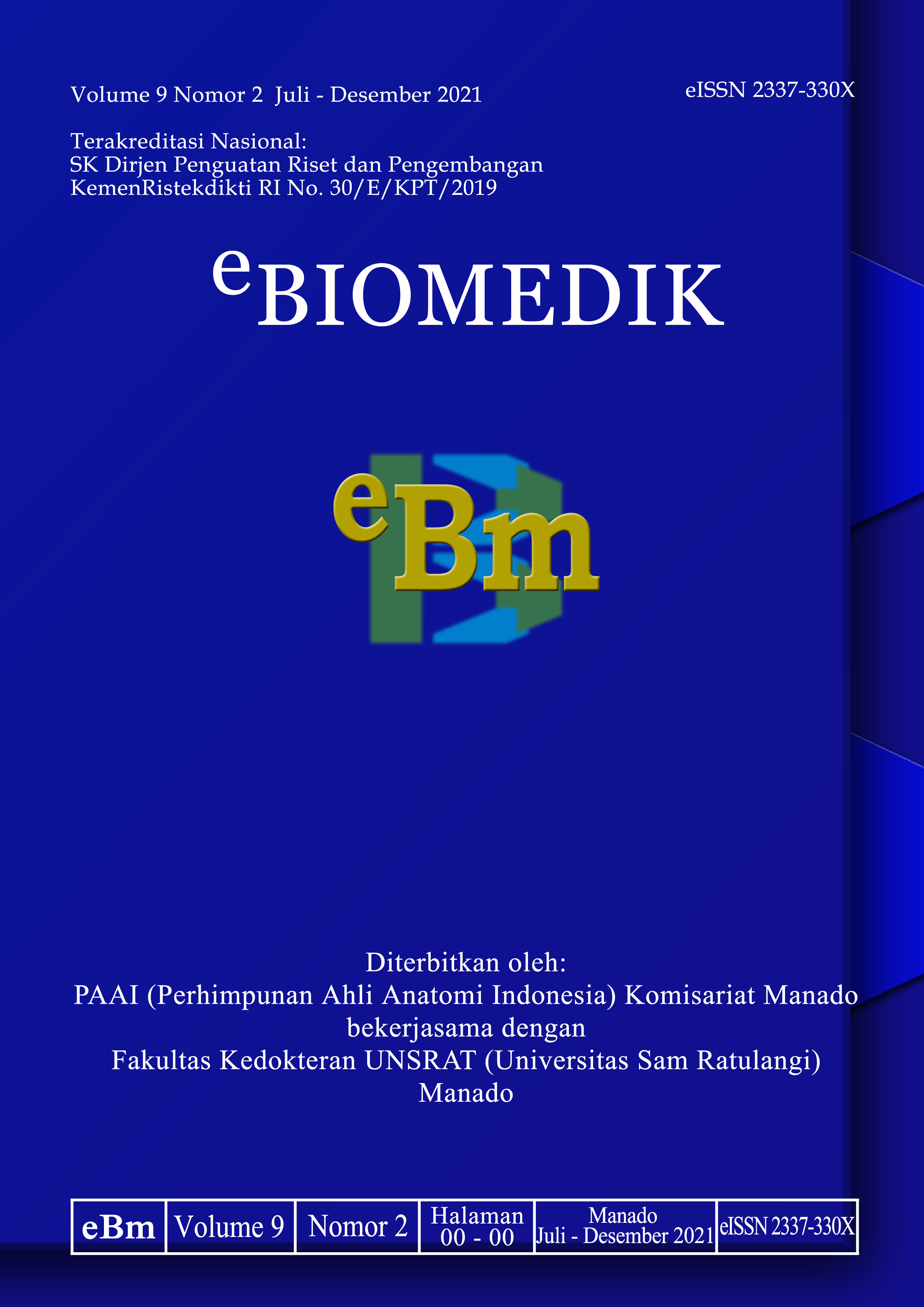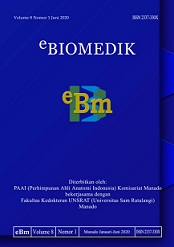Molecular Docking Senyawa Vitexin, Ursolic Acid dan Flavonol dalam Tumbuhan Binahong (Andredera Cordifolia (Ten.) Steenis) yang Berpotensi sebagai Penghambat Pertumbuhan COVID-19
DOI:
https://doi.org/10.35790/ebm.v9i2.31825Abstract
Abstract: Currently, there is no specific treatment for all the COVID-19 patients the procedures that can be done are just a symptomatic and oxygen therapy, Therefore all the people around the world have try to avoid this infection by consuming the potensial plants that can boost our body immunity like Binahong. This study was an in silico experimental. The finale result is the binding affinity score from each compound, for vitexin’s binding affinity score is – 8.0 kcal/mol, ursolic acid – 7.6 kcal/mol and flavonol – 7.8 kcal/mol. The finale result of this procedure also obtained all the amino acid residues that works on the active site of receptor 6LU7 as a main protase of COVID-19, namely THR24, LEU27, HIS41, THR45, SER46, MET49, PHE140, LEU141, ASN142, GLY143, SER144, CYS145, HIS163, MET165, GLU166 and HIS172. In conclusion, the binding affinity of vitexin, ursolic acid and flavonol are higher than remdesivir. Vitexin, ursolic acid and flavonol have a several similar bonds, particularly the van der waals bond and hydrogen bond.
Keywords: Molecular docking, COVID-19, binahong, flavonoid
Â
Abstrak: Saat ini belum tersedia rekomendasi tatalaksana khusus bagi pasien COVID-19, termasuk antivirus atau vaksin dan tata laksana yang dapat dilakukan adalah terapi simtomatik dan karena itulah, masyarakat dunia mencoba banyak cara agar menghindari infeksi virus ini dengan mengolah dan mengonsumsi tumbuhan yang dinilai berpotensi dalam meningkatkan imunitas tubuh seperti tumbuhan Binahong. Penelitian ini menggunakan metode penelitian in silico. Pada hasil akhir penelitian diperoleh nilai binding affinity dari ketiga senyawa yaitu senyawa vitexin - 8.0 kcal/mol, Ursolic Acid -7.6 kcal/mol dan Flavonol -7.8 kcal/mol. Diperoleh data mengenai residu asam amino yang bekerja pada sisi aktif reseptor 6LU7 sebagai main protase COVID-19 yaitu THR24, LEU27, HIS41, THR45, SER46, MET49, PHE140, LEU141, ASN142, GLY143, SER144, CYS145, HIS163, MET165, GLU166, dan HIS172. Sebagai simpulan, binding affinity dari senyawa vitexin, ursolic acid dari flavonol lebih tinggi dari nilai binding affinity remdesivir. Senyawa vitexin, ursolic acid dan flavonol memiliki beberapa jenis ikatan yang sama termasuk ikatan van der Waals dan ikatan hydrogen.
Kata Kunci: Molecular docking, COVID-19, binahong, flavonoid




